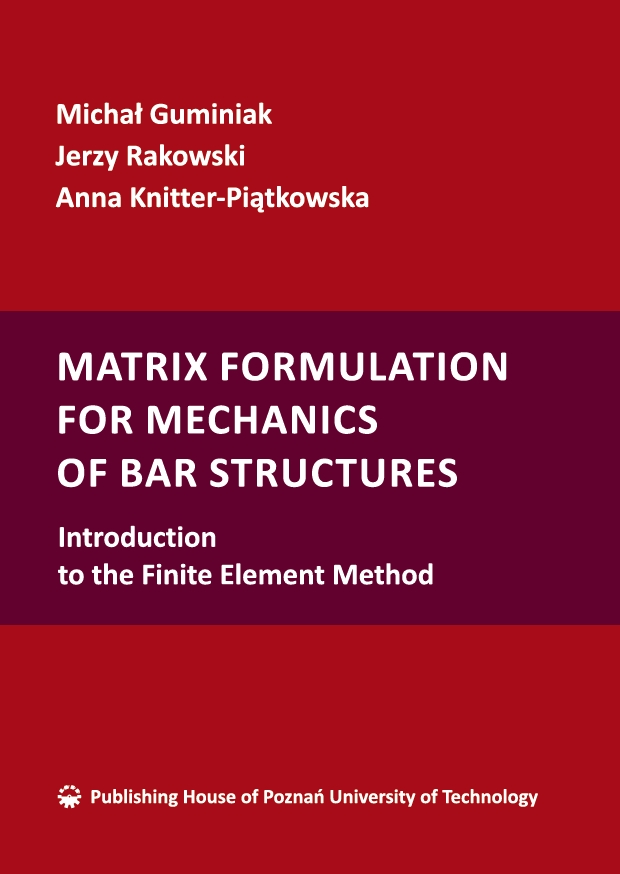Matrix formulation for mechanics of bar structures. Introduction to the Finite Element Method
The presented textbook entitled Matrix formulation for mechanics of beam structures. Introduction to the Finite Element Method is intended mainly for students of construction studies who study full-time or part-time second-cycle (master’s) studies. It can also be used by students of architecture, environmental engineering and related faculties of technical and vocational universities. The textbook is intended to encourage students to learn the basics of computer analysis of structures, in particular FEM. The content of the textbook includes material supplementing the scope of information provided during lectures and exercises in the subject of structural mechanics, covered by the study program. The presented problems can also be used by civil engineers who in their professional practice deal with the design of structures. They concern the statics of statically determinate and indeterminate flat bar structures. The problems of the analysis of bar structures in the matrix approach constitute an extension of the existing knowledge in the field of the analysis of flat bar structures in the classical approach, i.e. statics of statically determinate and statically indeterminate bar structures. The new approach is primarily an extension and supplement to the knowledge of the application of the displacement method in structure analysis. To derive the basic relationships connecting the displacements of nodes with node forces, the equations and relationships learned during didactic classes in the subjects: strength of materials and structural mechanics in the classical approach will be used.
In the presented approach, in addition to the already known concepts of the dis-placement method (system stiffness matrix, vector of geometric unknowns, vector of intercepts), new concepts will appear, such as the element stiffness matrix, the transformation matrix, the node force vector.
The book consists of six main chapters. In the first chapter, the basic definitions and dependencies used in matrix calculus and the principles of operations performed on matrices will be given. The definition of the determinant of a square matrix will also be reminded. The analysis of the structure in terms of a matrix begins with the definition of the stiffness matrix of two-node bar elements describing the axial deformation of the bar, beam bending, deformation of the frame element and the lattice element. These information constitute the content of the second chapter. Next, numerical examples illustrating the use of individual element types in the structural statics analysis will be solved. The third chapter presents the analysis of statics of axially loaded bars. The fourth chapter is devoted to the statics of beams, and the fifth chapter to the statics of flat frames. Finally, in chapter six, examples of tasks in the field of static structure of flat trusses will be presented. At the end of the book, a bibliography is given.

